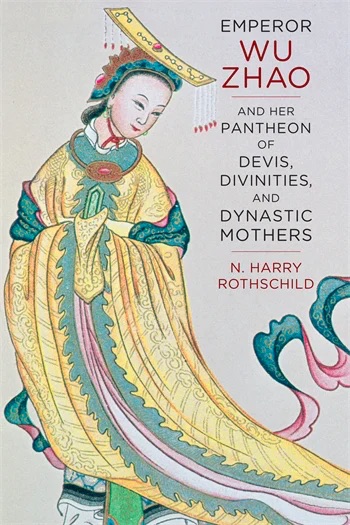Wu Zhao (624–705), better known as Wu Zetian or Empress Wu, is the only woman to have ruled China as emperor over the course of its 5,000-year history. How did she—in a predominantly patriarchal and androcentric society—ascend the dragon throne? Exploring a mystery that has confounded scholars for centuries, this multifaceted history suggests that China's rich pantheon of female divinities and eminent women played an integral part in the construction of Wu Zhao's sovereignty.
Wu Zhao deftly deployed language, symbol, and ideology to harness the cultural resonance, maternal force, divine energy, and historical weight of Buddhist devis, Confucian exemplars, Daoist immortals, and mythic goddesses, establishing legitimacy within and beyond the confines of Confucian ideology. Tapping into powerful subterranean reservoirs of female power, Wu Zhao built a pantheon of female divinities carefully calibrated to meet her needs at court. Her pageant was promoted in scripted rhetoric, reinforced through poetry, celebrated in theatrical productions, and inscribed on steles.
Rendered with deft political acumen and aesthetic flair, these affiliations significantly enhanced Wu Zhao's authority and cast her as the human vessel through which the pantheon's divine energy flowed. Her strategy is a model of political brilliance and proof that medieval Chinese women enjoyed a more complex social status than previously known.
- Table of Contents
- List of Illustrations
- Dynasties and Rulers Through the Mid-Tang
- Wu Zhao’s Titles at Different Stages of Her Career
- Reign Eras from 655 to 705
- Acknowledgments
- Introduction: Wu Zhao and Her Pantheon of Female Political Ancestors
- I. Goddesses of Antiquity
- 1. Wu Zhao as the Late Seventh-Century Avatar of Primordial Goddess Nüwa
- 2. Sanctifying Luoyang: The Luo River Goddess and Wu Zhao
- 3. First Ladies of Sericulture: Wu Zhao and Leizu
- II. Dynastic Mothers, Exemplary Mothers
- 4. The Mother of Qi and Wu Zhao: Connecting to Antiquity, Elevating Mount Song
- 5. Ur-Mothers Birthing the Zhou Line: Jiang Yuan and Wu Zhao
- 6. Wenmu and Wu Zhao: Two Mothers of Zhou
- 7. Four Exemplary Women in Wu Zhao’s Regulations for Ministers
- III. Drawing the Numinous Energies of Female Daoist Divinities
- 8. The Queen Mother of the West and Wu Zhao
- 9. The Mother of Laozi and Wu Zhao: From One Grand Dowager to Another
- 10. Rejected from the Pantheon: The Ill-Timed Rise of the Cult of Wei Huacun
- IV. Buddhist Devis and Goddesses
- 11. Dharma Echoes of Mother Maya in Wu Zhao
- 12. Bodhisattva with a Female Body: Wu Zhao and Devi Jingguang
- Conclusions
- Appendix: Wu Zhao’s Pantheon of Female Political Ancestors
- Glossary of Chinese Places, Names, and Terms
- Notes
- Bibliography
- Index

